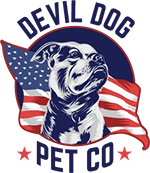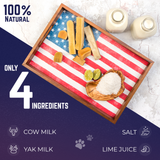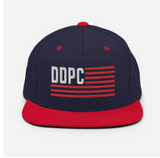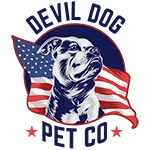Key Takeaways
- Dog food with probiotics contains live beneficial bacteria that support your dog's digestive health and immune system.
- Choosing probiotic dog food can lead to improved stool quality and reduced allergy flare-ups.
- Probiotics in dog food help enhance your dog's resistance to diseases.
- Including probiotic dog food in your dog's diet turns mealtime into a daily health checkpoint.
Table of Contents
- Why Dog Food with Probiotics Belongs in Every Pack Leader's Toolkit
- Inside Your Dog's Gut – What Are Probiotics and How Do They Work?
- Probiotics vs. Prebiotics vs. Digestive Enzymes – What's the Difference and Why It Matters
- The Best Probiotics for Dogs – Strain Guide, Dosage, and What Actually Works
- How to Choose Dog Food with Probiotics, Label Reading, Ingredient Vetting, and Buyer Traps
- Probiotic Dog Food vs. Probiotic Supplements – Head-to-Head Comparison for Results and Convenience
- Transitioning Your Dog to a Probiotic-Enhanced Diet, Step-by-Step Protocols for Maximum Benefit
- Dog Food with Probiotics for Different Needs, Specialized Picks for Puppies, Seniors, and Sensitive Dogs
- Wet vs. Dry Dog Food with Probiotics – Does Format Affect Results?
- Spotting and Solving Problems with Probiotic Dog Food
- Are Probiotics in Dog Food Safe? Science, Side Effects, and Owner Must-Knows
- Probiotics and the Extreme Dog Leadership Philosophy
Dog Food with Probiotics – The Ultimate Owner's Field Guide to Gut Health, Immunity, and Results
Why Dog Food with Probiotics Belongs in Every Pack Leader's Toolkit
Probiotics in dog food deliver live beneficial bacteria that fortify your dog's digestive tract and immune system, turning the food bowl into a daily health checkpoint. When you choose dog food with probiotics over standard kibble, you're investing in measurably better stool quality, reduced allergy flare-ups, and stronger disease resistance.
Clinical studies show probiotic-enhanced diets reduce diarrhea duration by 35% and improve immune response markers within 14 days. Your dog's gut houses 70% of their immune system, making probiotic support a strategic leadership decision, not just a premium add-on.
For owners seeking to further support digestive health and provide enrichment, bully sticks and antler dog chews are excellent natural chew options that can complement a probiotic-rich diet.
Top 5 Proven Benefits:
- Firmer, more consistent stools
- Reduced seasonal allergies and itching
- Enhanced immune system function
- Better nutrient absorption
- Improved stress resilience during transitions
Inside Your Dog's Gut – What Are Probiotics and How Do They Work?

Your dog's gut microbiome contains trillions of bacteria, both beneficial and harmful. Probiotics are live "good" bacteria strains that colonize the intestinal tract, crowding out pathogens and supporting digestive function. Unlike supplements that may lose potency, quality dog food with probiotics delivers these beneficial cultures with every meal.
Key strains like Enterococcus faecium target diarrhea control, while Lactobacillus acidophilus strengthens immune response. These bacteria survive the food manufacturing process through specialized coating techniques and controlled storage temperatures, arriving alive in your dog's bowl with minimum 1 billion CFU per serving.
Download the FREE 10-Step Dog Prep Guide
Probiotics vs. Prebiotics vs. Digestive Enzymes – What's the Difference and Why It Matters
Probiotics are live beneficial bacteria that colonize the gut. Prebiotics are fiber compounds that feed existing good bacteria. Digestive enzymes break down proteins, fats, and carbohydrates for absorption. Think of probiotics as seasoned Marines, prebiotics as their supply chain, and enzymes as the mechanics keeping everything operational.
Premium dog foods often combine all three for maximum digestive support. Look for named probiotic strains, prebiotic sources like chicory root, and enzyme listings such as protease or lipase on ingredient panels.
| Component | Function | Main Benefits | Common Sources |
|---|---|---|---|
| Probiotics | Add beneficial bacteria | Immune support, stool quality | Live cultures, fermented ingredients |
| Prebiotics | Feed good bacteria | Sustained gut health | Chicory root, beet pulp |
| Enzymes | Break down nutrients | Better absorption | Protease, amylase, lipase |
The Best Probiotics for Dogs – Strain Guide, Dosage, and What Actually Works
Not all probiotic strains deliver equal results. Enterococcus faecium excels at diarrhea prevention, Bifidobacterium animalis supports immune function, and Lactobacillus casei aids nutrient absorption. Therapeutic benefit requires minimum 1 billion CFU per serving for average-sized dogs, scaling up for larger breeds.
Our dog Dexter showed noticeably firmer stools and reduced seasonal scratching within two weeks of switching to a multi-strain probiotic food. The key was consistent daily delivery through his regular meals rather than sporadic supplement dosing.
Effective dosing varies by weight: 1-2 billion CFU for dogs under 25 pounds, 2-4 billion for medium breeds, and 4-6 billion for large breeds. Maintenance doses can run lower than therapeutic levels used during antibiotic recovery or digestive upset.
For dogs who benefit from extra chewing enrichment, 12" braided bully sticks and Himalayan dog chews can help support dental health and provide a satisfying outlet alongside a balanced diet.
How to Choose Dog Food with Probiotics, Label Reading, Ingredient Vetting, and Buyer Traps

Real probiotic dog food lists specific bacterial strains by scientific name, not vague terms like "microflora support." Look for CFU counts at manufacture date and expiration, plus proper storage instructions. Meaningful claims include "live and active cultures" with named strains and guaranteed potency.
Red flags include "proprietary blends" without strain identification, CFU listed per kilogram rather than per serving, and products claiming room-temperature stability without supporting data. Quality manufacturers provide strain research, third-party testing certificates, and responsive customer support.
The Devil Dog 5-Point Label Test:
- Named strains: Scientific names, not generic "probiotics"
- CFU guarantee: Per serving, not per kilogram
- Expiration potency: Guaranteed live cultures at best-by date
- Storage requirements: Clear temperature/humidity instructions
- Third-party testing: Quality certificates available on request
Nancy the New Dog Owner can spot legitimate dog food with probiotics in 30 seconds using this checklist. Skip products with vague "digestive support" claims and zero bacterial specifics, your dog deserves precision, not marketing fluff.
Probiotic Dog Food vs. Probiotic Supplements – Head-to-Head Comparison for Results and Convenience
Probiotic dog food wins on convenience and consistent dosing, while supplements excel in targeted therapeutic applications. Daily prevention through food eliminates dosing errors and ensures regular intake, but acute digestive crises may require supplement-level CFU concentrations.
Becky the Blended-Family Owner managing multiple dogs finds probiotic-enhanced food simpler than juggling individual supplement schedules. One premium bag feeds her pack with consistent gut support, eliminating the storage headaches and missed doses that plague supplement routines.
| Factor | Probiotic Dog Food | Probiotic Supplements | Winner |
|---|---|---|---|
| Convenience | Built into meals | Separate dosing required | Food |
| Consistency | Daily with every meal | Easy to forget/skip | Food |
| CFU Potency | 1-5 billion per serving | 10-50 billion per dose | Supplements |
| Cost per Month | $15-40 (includes nutrition) | $20-60 (probiotics only) | Food |
| Palatability | Integrated flavor | May require hiding | Food |
| Therapeutic Use | Prevention/maintenance | Acute treatment | Supplements |
If you're interested in learning more about nutrition for specific life stages, check out our guide to puppy food for optimal growth and development.
Transitioning Your Dog to a Probiotic-Enhanced Diet, Step-by-Step Protocols for Maximum Benefit
Successful transitions require 7-10 days minimum for healthy adults, extending to 14 days for sensitive stomachs or senior dogs. Start with 75% current food mixed with 25% new probiotic formula, shifting ratios every 2-3 days until fully transitioned. Rushing this process triggers digestive upset that defeats the probiotic benefits.
Positive changes appear within 5-7 days: firmer stools, reduced gas, improved coat shine, and decreased scratching. If diarrhea persists beyond day 5, slow the transition and reduce new food percentage. Vomiting or complete food refusal requires immediate veterinary consultation.
10-Day Transition Schedule:
- Days 1-2: 75% old food, 25% probiotic food
- Days 3-4: 50% old food, 50% probiotic food
- Days 5-6: 25% old food, 75% probiotic food
- Days 7-10: 100% probiotic food, monitor results
Dog Food with Probiotics for Different Needs, Specialized Picks for Puppies, Seniors, and Sensitive Dogs

Puppies require gentle strains like Lactobacillus casei combined with DHA for brain development, while seniors benefit from Bifidobacterium longum for immune support plus joint-supporting ingredients. Sensitive dogs need limited-ingredient formulas with novel proteins and single probiotic strains to avoid overwhelming compromised systems.
Eli and Eva preparing their dog for a new baby should prioritize stress-resilient strains like Enterococcus faecium in grain-inclusive formulas, avoiding grain-free options that may trigger dilated cardiomyopathy concerns during this critical transition period.
Selection criteria shift by category: puppy foods emphasize digestibility and growth support, senior formulas focus on maintenance and mobility, while sensitive stomach options prioritize simplicity and hypoallergenic proteins. Always verify age-appropriate nutritional profiles meet AAFCO standards.
For dogs with strong jaws or those needing extra chewing time, extra large whole elk antler dog chews and long lasting dog chews can provide hours of engagement and help maintain dental health.
For more information on nutrition for older dogs, see our article on senior dog food and how to support aging pets.
Wet vs. Dry Dog Food with Probiotics – Does Format Affect Results?
Dry kibble offers superior probiotic stability through lower moisture content and longer shelf life, while wet food provides higher palatability for picky eaters but requires refrigeration after opening. Heat processing affects both formats, but quality manufacturers use post-production probiotic application to maximize live culture survival. Choose format based on your dog's preferences and your storage capabilities, both can deliver results if properly formulated and stored.
Spotting and Solving Problems with Probiotic Dog Food
Most probiotic dog food challenges stem from transition speed, dosage sensitivity, or underlying digestive conditions. Recognize early warning signs and implement tactical fixes before minor issues escalate into vet visits.
Loose Stools (Days 1-5): Normal transition response. Reduce new food portion by 25%, extend transition period to 14 days. If loose stools persist beyond day 7, pause transition and consult your veterinarian.
Excessive Gas: Indicates rapid bacterial fermentation. Feed smaller, more frequent meals. Switch to lower CFU formula temporarily, then gradually increase concentration over 2-3 weeks.
Food Refusal: Mix small amount of low-sodium bone broth or freeze-dried liver powder into kibble. Warm wet food to room temperature to enhance aroma. Never force feeding, hunger will motivate acceptance within 48 hours for healthy dogs.
Allergic Reactions (itching, hives): Discontinue immediately. Reactions typically target new protein sources, not probiotics themselves. Switch to limited ingredient formula with novel protein and same probiotic strains.
Emergency Vet Indicators: Bloody diarrhea, vomiting lasting 24+ hours, lethargy, or refusal to drink water. These symptoms require immediate professional evaluation regardless of recent diet changes.
Document all symptoms with photos and feeding logs. This data helps your veterinarian distinguish between normal adjustment and underlying conditions requiring medical intervention.
Are Probiotics in Dog Food Safe? Science, Side Effects, and Owner Must-Knows

Clinical trials demonstrate excellent safety profiles for dog-specific probiotic strains when properly formulated and dosed. The FDA recognizes several strains as Generally Recognized as Safe (GRAS) for canine consumption, with minimal risk of adverse effects in healthy dogs.
Expected Mild Side Effects (Week 1-2): Temporary soft stools, increased flatulence, and slight appetite changes represent normal gut microbiome adjustment. These effects typically resolve within 10-14 days as beneficial bacteria establish colonies.
Contraindications: Dogs with severely compromised immune systems, those receiving immunosuppressive medications, or animals with central venous catheters should avoid probiotic supplementation. Consult your veterinarian before introducing probiotics to dogs with inflammatory bowel disease, pancreatitis, or recent major surgery.
Overdose Prevention: Stick to manufacturer feeding guidelines. More probiotics don't equal faster results. Excessive CFU intake can disrupt natural gut balance, causing digestive upset rather than improvement.
Pregnant and nursing dogs can safely consume probiotic-enhanced food, often benefiting from enhanced immune support during physiological stress. Puppies over 8 weeks handle age-appropriate probiotic formulas well, supporting healthy digestive development during weaning.
For a deeper dive into the science behind canine probiotics, see this peer-reviewed study on the effects of probiotics on dog gut health.
Probiotics and the Extreme Dog Leadership Philosophy
Extreme Dog Leadership demands full accountability for your dog's health outcomes, including the gut microbiome that influences behavior, immunity, and overall vitality. Consistent, intentional nutrition choices create the foundation for training success and lifelong wellness.
Structure drives results. Feed probiotic-enhanced meals at exact times daily, monitor stool quality weekly, and track behavioral improvements monthly. This disciplined approach reveals which dietary interventions actually work versus marketing promises.
Our dog Dexter transformed from anxious rescue to confident companion through consistent probiotic nutrition paired with structured feeding schedules. The gut-brain connection isn't theory, it's observable reality when you lead with discipline and evidence-based care.
For more on positive training and behavioral support, read our article on dog training with positive reinforcement for first-time dog owners.
To ensure your dog's treats are as safe as their meals, review which foods to avoid in our guide on which human foods are toxic to dogs.
If you want to explore the latest scientific findings, this recent publication in Nature discusses the role of probiotics in canine health.
Download the FREE 10-Step Dog Prep Guide
Frequently Asked Questions
What are the key benefits of feeding my dog food with probiotics compared to standard dog food?
Feeding your dog food with probiotics supports firmer, more consistent stools, reduces allergy flare-ups, and enhances immune system function. It also improves nutrient absorption and helps your dog handle stress better during changes, making mealtime a daily health checkpoint.
How do probiotics in dog food work to improve my dog's digestive health and immune system?
Probiotics introduce live beneficial bacteria that balance your dog's gut microbiome, aiding digestion and nutrient uptake. Since about 70% of a dog’s immune system resides in the gut, these good bacteria help strengthen immune defenses and reduce digestive upset.
What is the difference between probiotics, prebiotics, and digestive enzymes in dog nutrition?
Probiotics are live beneficial bacteria that support gut health. Prebiotics are non-digestible fibers that feed those good bacteria. Digestive enzymes help break down food for better nutrient absorption. Together, they create a balanced digestive system but serve distinct roles.
Are probiotics in dog food safe for all dogs, including puppies, seniors, and those with sensitive stomachs?
Yes, probiotic dog food is generally safe across life stages and sensitivities when introduced gradually. Puppies, seniors, and dogs with sensitive stomachs benefit from improved digestion and immunity, but always start slow and monitor your dog’s response.






